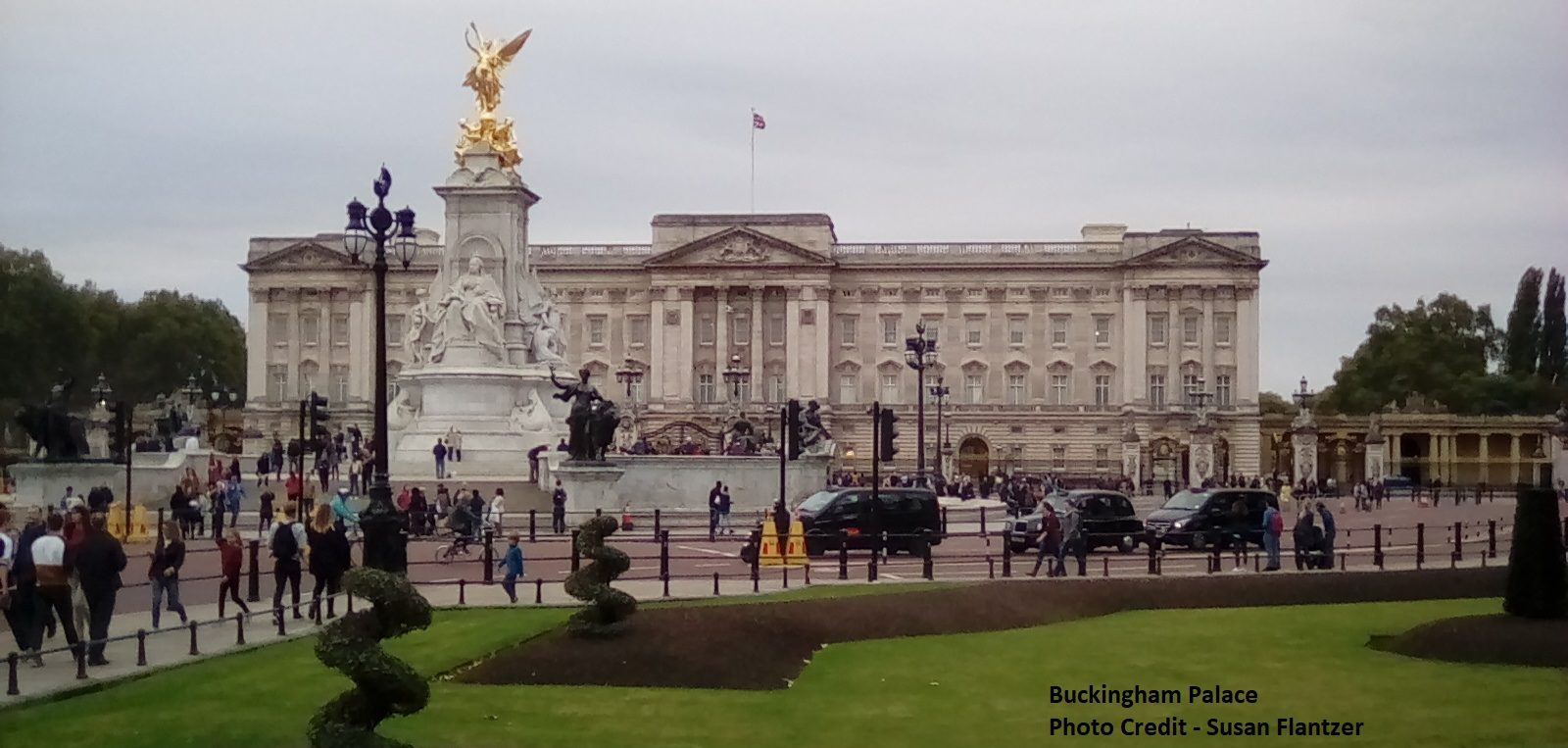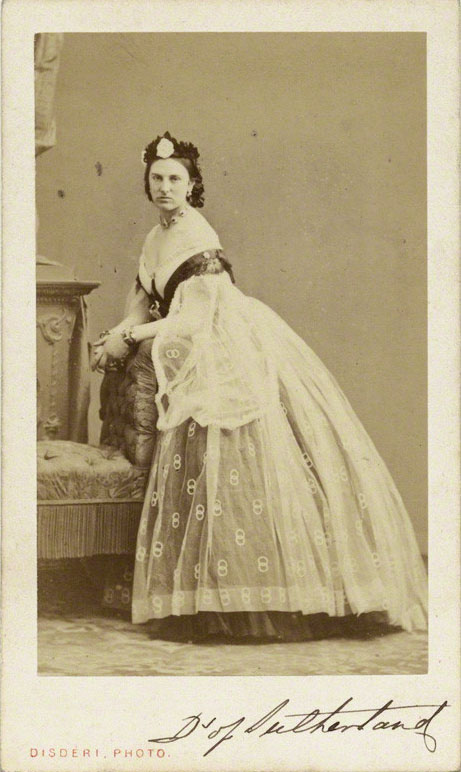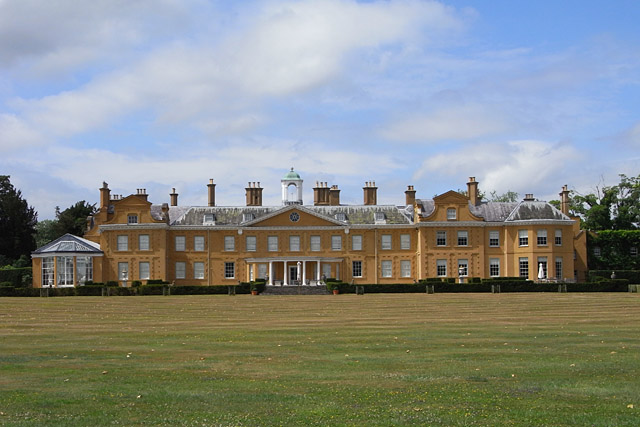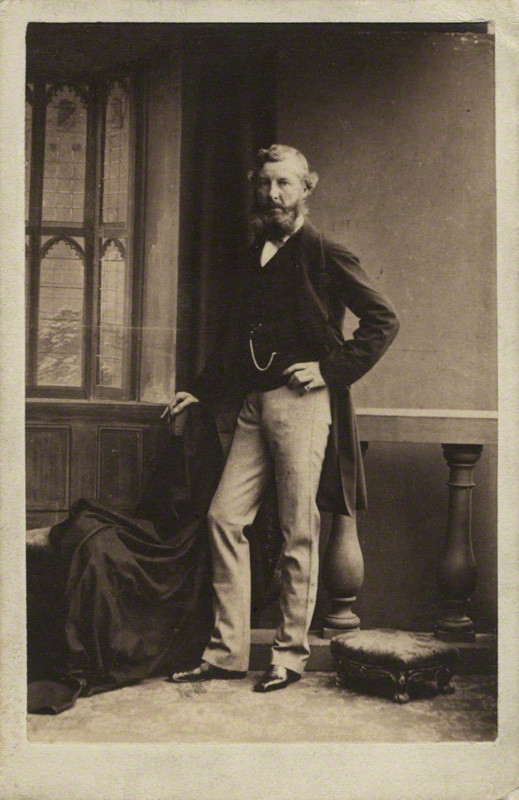by Scott Mehl
© Unofficial Royalty 2018
Elizabeth Russell, Duchess of Bedford, served as Mistress of the Robes to Queen Victoria from 1880 until 1883. The Mistress of the Robes was always a Duchess and attended Queen Victoria on every State occasion. She had precedence over every lady of the Court and when in residence, presided at the Household table. She looked over and passed on the Queen’s personal bills sent to her from the Robes Office. During Queen Victoria’s reign, the Mistress of the Robes was a political appointment and changed when the political party of the government changed.
Born Lady Elizabeth Sackville-West, she was the daughter of George Sackville-West, 5th Earl De La Warr and Lady Elizabeth Sackville, on September 23, 1818. Elizabeth had nine siblings:
- George West, Viscount Cantelupe (1814-1850) – unmarried
- Charles Sackville-West, 6th Earl De La Warr (1815-1873) – unmarried
- Reginald Sackville, 7th Earl De La Warr (1817-1896) – married the Hon. Constance Cochrane-Wishart-Baillie, had issue
- Mortimer Sackville-West, 1st Baron Sackville (1820-1888) – married (1) Fanny Dickson, no issue; (2) Elizabeth Faber, no issue
- unnamed son (1822-1823) – died in infancy
- Lady Mary Catherine Sackville-West (1824-1900) – married (1) James Gascoyne-Cecil, 2nd Marquess of Salisbury, had issue; (2) Edward Stanley, 15th Earl of Derby, no issue
- Lionel Sackville-West, 2nd Baron Sackville (1827) – unmarried
- William Sackville-West (1830-1905) – married Georgina Dodwell, had issue
- Lady Arabella Sackville-West (1835-1869) – married Sir Alexander Bannerman, 9th Baronet, had issue
Elizabeth’s father served as Lord Chamberlain of the Royal Household from 1841 to 1846, and again from 1858 to 1859. Her brother Reginald served as Chaplain to Queen Victoria from 1846 to 1865.

Francis Russell, 9th Duke of Bedford (left). source: Wikipedia
In 1840, Elizabeth was one of the bridesmaids at the wedding of Queen Victoria and Prince Albert. Four years later, on June 18, 1844, Elizabeth married Francis Russell, later the 9th Duke of Bedford. He was the son of Lord George William Russell and Elizabeth Rawdon. The couple had four children:
- George Russell, 10th Duke of Bedford (1852-1893) – married Lady Adeline Somers, no issue
- Lady Ella Russell (1854-1936) – unmarried
- Lady Ermyntrude Russell (1856-1927) – married Edward Malet, 4th Baronet, no issue
- Herbrand Russell, 11th Duke of Bedford (1858-1940) – married Mary de Caurroy Tribe, had issue

Woburn Abbey. photo: Public Domain, https://commons.wikimedia.org/w/index.php?curid=716546
Elizabeth became Duchess of Bedford in 1872 when her husband succeeded to the dukedom. The couple inherited Woburn Abbey, in Bedfordshire (the country home of the Dukes of Bedford), and the Bedford Estate in London. In 1880, Elizabeth was appointed Mistress of the Robes by Prime Minister William Gladstone and served until 1883. When Gladstone returned to power for several months in 1886, no ladies would accept the appointment due to his policy of Home Rule in Ireland. During his brief government service, Elizabeth served as Acting Mistress of the Robes, although she was not formally appointed.

Norris Castle. photo: By Mark Pilbeam, CC BY-SA 2.0, https://commons.wikimedia.org/w/index.php?curid=6105884
The same year Elizabeth became Mistress of the Robes, her husband purchased Norris Castle, the neighboring estate to Osborne House on the Isle of Wight. This allowed them to be close by when The Queen was in residence at Osborne. Queen Victoria had stayed at Norris Castle twice, in her childhood, during vacations there with her mother. She later purchased the house and property next door and rebuilt it to become the Osborne House that exists today.
Having survived her husband by six years, The Dowager Duchess of Bedford died at Latimer House near Chesham, Buckinghamshire, on April 22, 1897. She was cremated and her ashes were interred in the Bedford Chapel at St. Michael’s Church in Chenies, Buckinghamshire.
Recommended Book – Serving Queen Victoria: Life in the Royal Household by Kate Hubbard
This article is the intellectual property of Unofficial Royalty and is NOT TO BE COPIED, EDITED, OR POSTED IN ANY FORM ON ANOTHER WEBSITE under any circumstances. It is permissible to use a link that directs to Unofficial Royalty.















